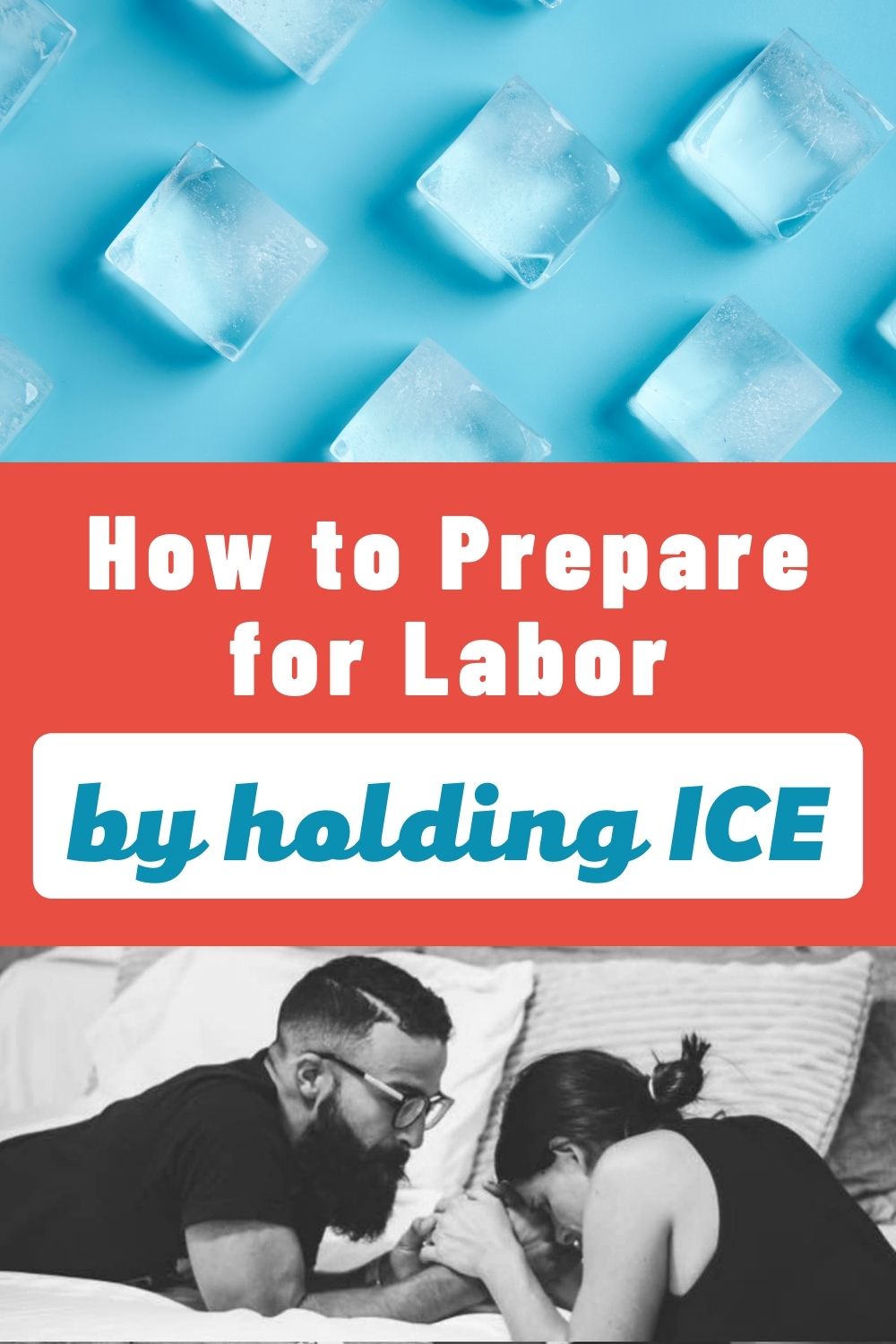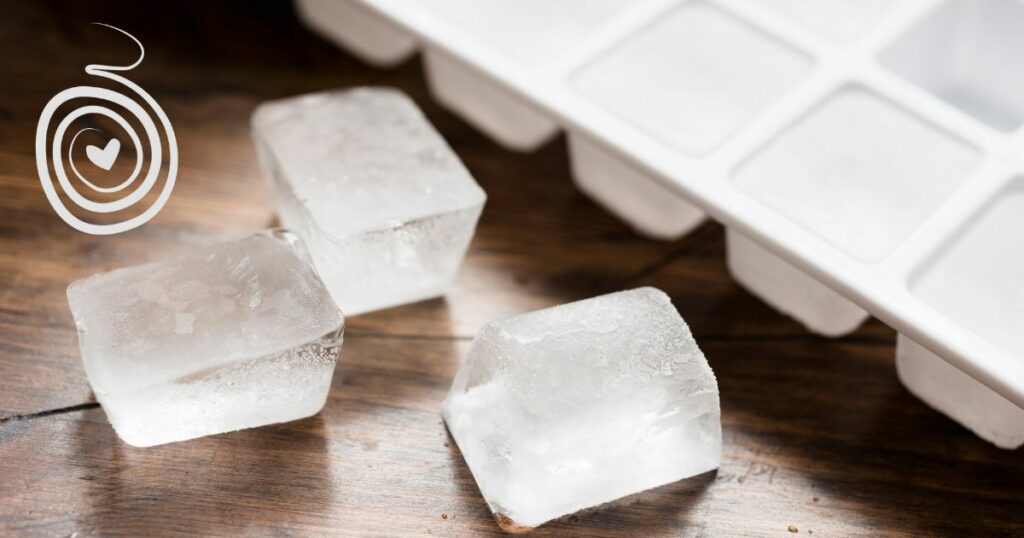In my childbirth classes one of the ways we prepare for labor is by holding ice. I realize this may sound super strange, but I’ve found it to be an excellent teaching tool to explore pain and pain coping. That, and it’s the only ethical way I can inflict pain on people. 😉
In this article we discuss the benefits of using ice to prepare for labor, but also how to do it effectively. This information will be helpful for first time moms looking to develop a pain coping practice, but also childbirth educators and doulas in their birth businesses.
On This Page
6 minute read
↓Holding Ice Doesn’t Feel Like Labor
↓Our Culture Avoids Pain
↓Supplies Needed to Hold Ice for Labor Preparation
↓Why One Minute?
↓Setup to Hold Ice for 60 Seconds
↓How to Prepare for Labor by Holding Ice
↓+ Breath Awareness
↓Practice, practice, practice!

Holding Ice Doesn’t Feel Like Labor
Before we learn about holding ice, it’s important to understand that holding ice doesn’t feel like labor. Not even close. However, holding ice allows first time parents the opportunity to experience mild pain in a controlled environment. Holding ice for a minute puts us in a similar headspace as labor – this hurts and I don’t like it! And then creates the space for observation – how am I responding to this pain and is it working for me?
Our Culture Avoids Pain
It’s very important to develop a pain coping practice because our modern culture has not provided many opportunities to develop pain coping skills. Occasionally I have some parents come through my classes that have experienced a lot of pain over the years because of health conditions, but most are inexperienced with pain. Our society avoids pain if at all possible. This is fine and dandy until our limits are tested, and childbirth blows past our limits pretty quickly. Enter the ice cubes!
Supplies Needed to Hold Ice for Labor Preparation
The supplies needed for one person to hold ice for labor preparation are pretty simple.
- 2 ice cubes
- Small dixie (or similar) cup to hold ice
- Something to catch drips, like a paper towel
- A one minute timer on a phone, Alexa, or stopwatch, etc.

Why One Minute?
When holding ice for labor preparation I have parents hold ice for one minute. The reason why I’ve chosen one minute is because 60 seconds is the average length of a contraction. In early labor contractions may be shorter around 30 seconds, and right before pushing in transition around 90 seconds, but on average active labor contractions last 60 seconds.
Tips for Holding Ice for 60 Seconds
The following are a few tips for holding ice to prepare for labor.
- Having a partner assist with the timer makes holding ice a lot simpler, but this can absolutely be done solo.
- Use a phone or other electronic device to countdown from one minute.
- This will get drippy! Before pressing the start button, plan where the drips will go. Either drip them in a cup or on a paper towel.
- Before starting, plan where to hold the ice – in the hand, wrist, or back of the ear. (Back of the ear is more painful!)
- Those with calluses on the hands may want to choose the wrist or back of the ear.
- If holding ice in the hand make sure to hold the ice in a grip, and not just place it on the hand.
- If doing a few “ice contractions” in a row, make sure to switch hands each time. We don’t want to go numb!
How to Prepare for Labor by Holding Ice
Now that we know why and how, it’s time to put this information in action. Hit the timer, pick up the ice, and see what it’s like! Once the timer goes off, put the ice down and reflect with a partner or a journal. Without judgement, remember what you were thinking or what stood out to you during that minute. There’s no wrong answer!
Do it again with the other hand one more time. Once the timer goes off, put the ice down and reflect about anything that stood out. Notice if you were telling yourself anything during that minute. Notice anything about your body that stood out during that time. Write it all down or tell your birth partner.

+ Breath Awareness
Holding ice for a minute is great and all, but don’t stop there. It’s helpful to practice some sort of pain coping practice while holding ice in order to try these new tools out and see how they’re helpful. In the book Birthing From Within (below), there are many pain coping techniques discussed, but my favorites are breath awareness, non-focused awareness, and circular breathing. Before pairing ice with breath awareness, practice it until it makes sense, and then add the ice. (Here are instructions on how to practice breath awareness with ice!)
Practice, practice, practice!
Here’s the thing. To be able to draw upon these techniques for easing labor pain you MUST practice them every day! In labor it’s difficult to think about what pain coping technique to use. Women need to be out of their minds and not in them to fully surrender to the process of labor. It’s best to be able to default to a breathing technique without having to think about it. To just do it.
Pick a time each day to devote to practicing your pain coping techniques. You don’t have to use ice every time and it doesn’t need to take long either. Some parents find it helpful to pair their practice with a daily activity like washing dishes, driving, or walking the dog. It doesn’t have to be pretty, just grab some ice and do it!
Want More?
If you liked this and want more pain management for labor tips and advice, I’ve got you! Here are some Mother Rising favorites about pain coping.
- How to get through labor without an epidural.
- How to labor at home as long as possible.
- How to make the most of the time between contractions.
- 5 most popular birthing positions for reduced pain and length of labor.
- How to Rock Back Labor
- How to Progress Prodromal Labor
- How to Get Through Painful Labor Before an Epidural
- How to Rock a Long and Difficult Birth

